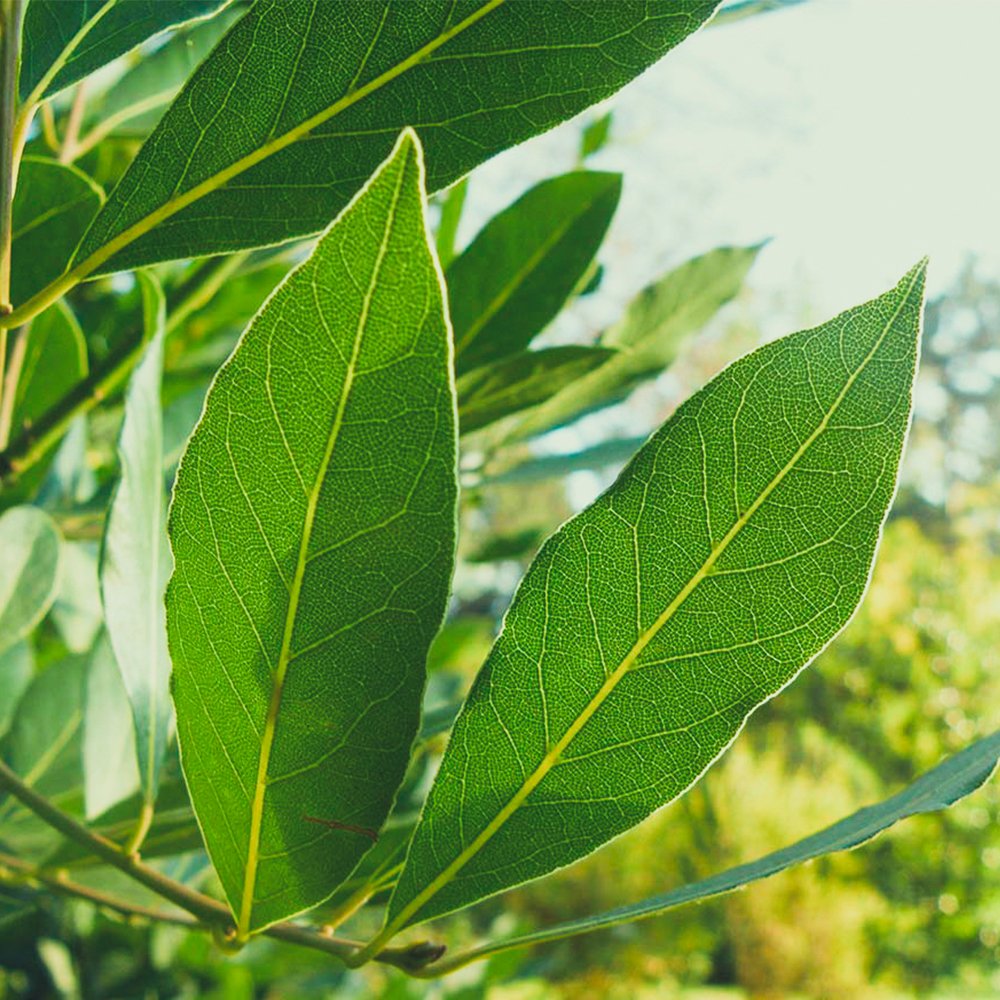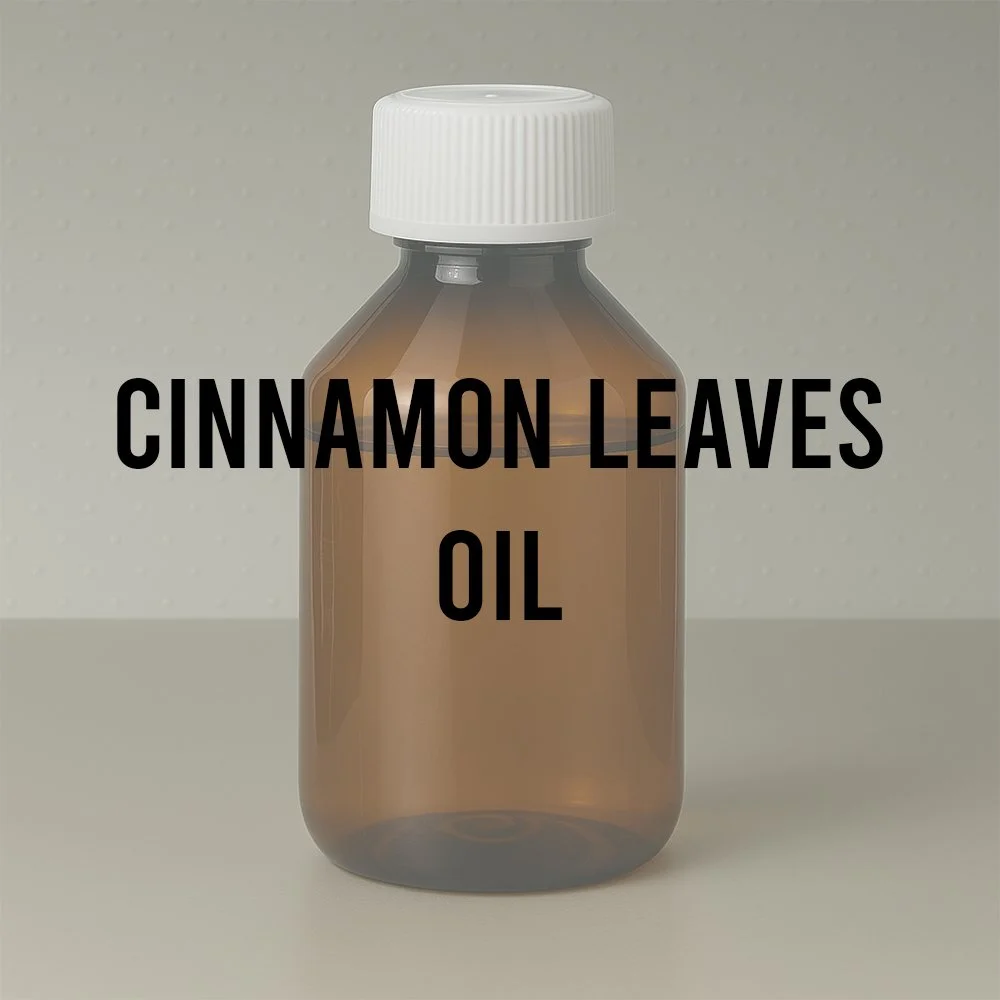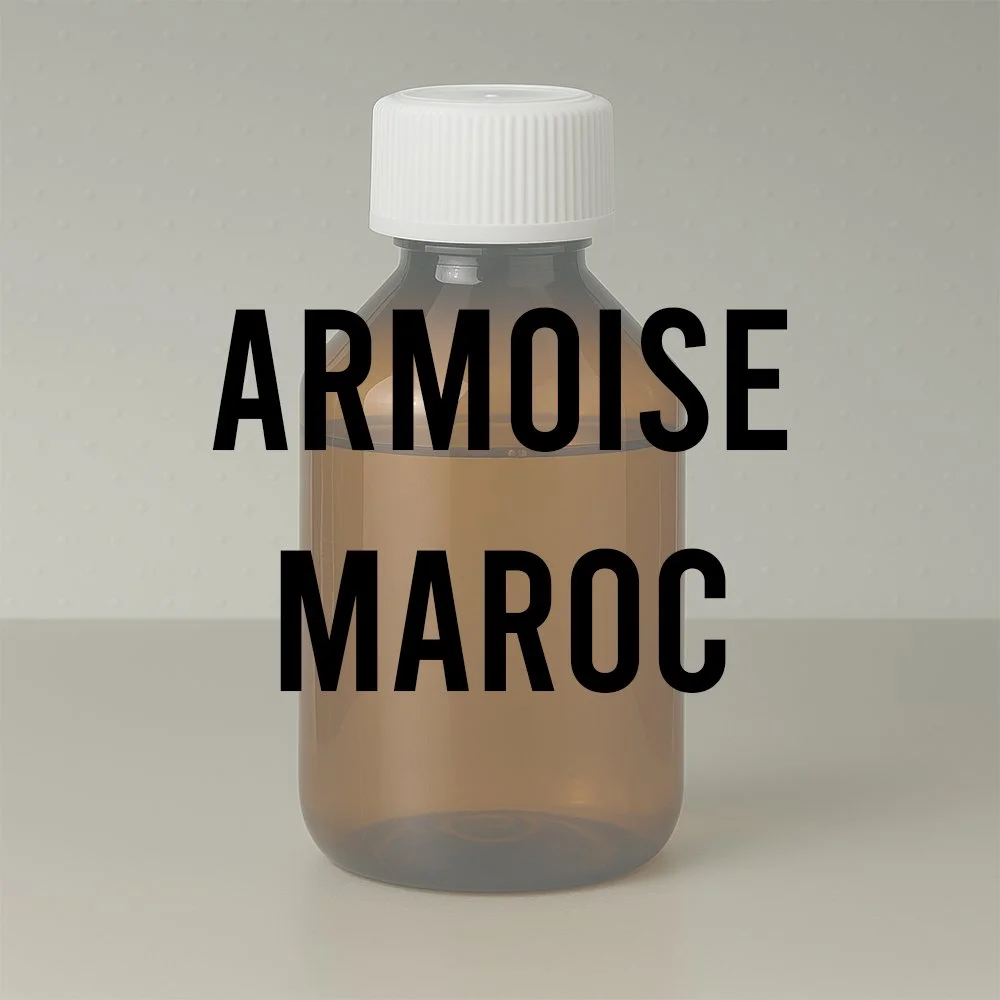Laurel Leaf Oil Technical Ingredient Overview
🔎 Chemical Name — Laurus nobilis leaf oil
🧪 Synonyms — Bay laurel oil, Sweet bay oil, Bay leaf oil, True laurel oil
📂 CAS Number — 8006-78-8; 84603-73-6
📘 FEMA Number — 2125 (Laurel Leaf Oil); 2613 (Laurel Leaves Extract)
⚖️ Molecular Weight — Not applicable (natural complex substance)
📝 Odor Type — Aromatic-camphoraceous, fresh, spicy
📈 Odor Strength — Medium to strong
👃🏼 Odor Profile — Fresh, cineolic, camphoraceous opening transitioning to warm, creamy-spicy, cardamom-like middle phase with faint medicinal undertones; drydown reveals pleasant, slightly sweet and spicy woody notes distinct from eucalyptus or cajuput oils
⚗️ Uses — Perfumery modifier for citrus, pine, bay, resinous, and herbaceous accords; fougère and masculine fragrances; bath products; flavor ingredient for meat seasonings, pickles, sauces, and soups
🧴 Appearance — Pale yellow to very pale olive-green or almost colorless mobile liquid
What is Laurel Leaf Oil?
Laurel Leaf Oil is a steam-distilled essential oil obtained from the fresh leaves and young branchlets of Laurus nobilisL., an evergreen tree belonging to the Lauraceae family. This aromatic material represents one of perfumery's more subtle natural ingredients, characterized by a complex evolution from fresh-terpenic to creamy-spiced notes that adds refined depth to classic compositions (Arctander, 1960).
The oil is classified as an aromatic-camphoraceous essential oil dominated by monoterpene oxides, particularly 1,8-cineole (eucalyptol), which typically comprises 30-70% of the total composition depending on geographic origin and harvest conditions (Burdock, 2016). Unlike related cineolic oils such as eucalyptus or cajuput, laurel leaf oil presents a distinctly warmer, sweeter character with less aggressive medicinal aspects in its drydown phase.
Historical Background
Laurus nobilis originates from the eastern Mediterranean region and Asia Minor, where the tree has been revered for millennia. In Ancient Greece, the laurel tree was sacred to the god Apollo and associated with sun symbolism. The practice of crowning victors, poets, and heroes with laurel wreaths dates to classical antiquity—the Latin laureatus(crowned with laurels) from the late 14th century forms the root of modern terms like "laureate" and "baccalaureate" (Swahn, 1991).
While laurel leaves have been used as a culinary herb for centuries, the commercial production of laurel leaf oil through steam distillation is a more recent development. Historical production centers included Algeria, Morocco, and Cyprus, though production in these regions has been largely discontinued. Contemporary production is concentrated in Turkey (which accounts for approximately 97% of global Laurus nobilis production), Croatia, Serbia and other Balkan countries, Italy (particularly Sardinia), France, and China (Paparella et al., 2022; Arctander, 1960).
An interesting historical footnote: in Turkey and Italy, dried laurel leaves traditionally served as packaging material for licorice extract bars, where the hygroscopic extract absorbed a faint medicinal-cineolic flavor from the leaves, while the leaves themselves acquired a subtle sweet-extract note—creating a symbiotic flavor exchange that enhanced both products (Arctander, 1960).
Olfactory Profile
Scent Family: Aromatic-Camphoraceous
Main Descriptors:
Top notes: Fresh, strong, sweet-aromatic, camphoraceous, cineolic, with slight medicinal aspects reminiscent of eucalyptus but warmer and less aggressive
Heart notes: Creamy-spicy warmth evolving toward cardamom-like or sweet bay characteristics with soft herbal-green nuances
Base notes: Pleasant, slightly sweet, delicately spicy woody drydown with warm fixative qualities distinct from eucalyptus, cajuput, or myrtle oils
Intensity: Medium to strong; pervasive when undiluted but becomes refined and subtle in dilution
Tenacity: Moderate persistence; Turkish samples have demonstrated approximately 32 hours longevity in strip tests
Volatility: Primarily top to middle note behavior due to high monoterpene oxide content, though warmer heart notes provide some bridging to middle-base territories
Character Variation: Chinese laurel leaf oil is notably high in eugenol (>30%), which significantly impairs the fresh cineolic topnotes and shifts the profile toward more phenolic-spicy territories—this chemotype requires careful quality control verification (Arctander, 1960; Burdock, 2016).
Applications in Fine Fragrance
Laurel Leaf Oil functions primarily as a modifier and blending agent rather than a featured note. Its complex terpene profile—spanning oxides, alcohols, esters, and phenolic compounds—provides multifaceted support to fragrance structures (De Feo et al., 2018).
Primary Applications:
Masculine fragrances: Aromatic lift with clean, warm-spicy character
Fougère compositions: Herbal-aromatic complexity bridging lavender and coumarin territories
Chypre bases: Fresh topnote interest with natural body and fixation at higher concentrations
Woody-spicy orientals: Warm, spiced green qualities
Successful Pairings:
Citrus oils: Provides aromatic depth and warmth to fresh citrus accords
Herbaceous notes: Natural synergy with sage (clary), rosemary, thyme, marjoram
Conifer oils: Blends excellently with pine needle oils, juniperberry, cypress
Resins: Creates interesting contrasts with olibanum, labdanum, and benzoin
Florals: Unexpected but effective combinations with lavender
Spices: Complements bay leaf, nutmeg, mace, cardamom profiles
The oil produces notably fresh, almost orange-like effects in the topnote with rich, delicately spicy undertones that are warm and soft—qualities particularly valued in aftershave preparations where its antibacterial properties provide functional benefits alongside olfactory contribution (Arctander, 1960).
Performance in Formula
Blending Behavior: Laurel Leaf Oil demonstrates excellent miscibility with both polar and non-polar fragrance materials. Its broad chemical spectrum—including monoterpene hydrocarbons (α-pinene, β-pinene, sabinene), oxygenated monoterpenes (1,8-cineole, linalool, α-terpineol), esters (α-terpinyl acetate), and phenolic compounds (eugenol, methyl eugenol)—allows it to bridge multiple olfactory families effectively.
Dosage Considerations:
Modifier/supporting role: 0.5-3% of fragrance concentrate
Featured aromatic note: 5-10% of fragrance concentrate
Functional aftershave applications: Higher concentrations possible due to antimicrobial properties
Solubility: Soluble in 1 volume of 80% ethanol or less; solutions remain clear without opalescence (Burdock, 2016).
Technical Specifications:
Specific gravity (25°C): 0.905-0.929
Refractive index (20°D): 1.4650-1.4700
Optical rotation (20°D): -19° to -10°
Acid number: Maximum 3
Saponification number: 15-45
Saponification number after acetylation: 36-85
Industrial & Technical Uses
Food Industry Applications: Laurel Leaf Oil is extensively used in the food processing sector, particularly by canning industries for pickles, seasonings, meat products, and soups. The oil offers advantages over whole or ground leaves including greater accuracy in formulation, uniformity of flavor delivery, and reduced shipping weight (Arctander, 1960).
Flavor Profile: Contrary to published claims of bitterness, laurel leaf oil presents a surprisingly sweet and pleasant flavor profile. The taste is fresh, almost orange-like, with rich and delicately spicy undertones that are warm and soft. Minimum perceptible concentration is approximately 0.25 mg%, with suggested use levels ranging from 1.00 to 2.50 mg% in food applications (Arctander, 1960).
Cosmetic Applications: Used in bath products, soaps, and personal care formulations where its aromatic-fresh character and antimicrobial properties provide both olfactory and functional benefits.
Adulteration Monitoring: Commercial lots occasionally contain adulterants including eucalyptus oil, cajuput oil, myrtle oil, turpentine fractions, or low-grade bay oils. Quality control should verify authentic cineolic-spicy profile and appropriate eugenol levels (Arctander, 1960).
Regulatory & Safety Overview
IFRA Status: No current restrictions under IFRA 51st Amendment (as of June 2023). The oil is not listed among prohibited or restricted materials in the IFRA Standards library.
EU Cosmetics Regulation: Compliant with EU cosmetic regulations. Contains allergens that must be declared if present above threshold levels:
Eugenol (must be labeled if >0.001% in leave-on products, >0.01% in rinse-off products)
Limonene (must be labeled if above threshold)
Linalool (must be labeled if above threshold)
According to EU Cosmetic Directive guidelines, linalool and eugenol allergens must not exceed 0.01% concentration in shower gels and rinse-off products, and must not be higher than 0.001% in body oils, massage oils, and creams (Stoyanova et al., 2019).
FEMA GRAS Status:
FEMA 2125: Laurel Leaf Oil - GRAS (Generally Recognized as Safe) affirmed
FEMA 2613: Laurel Leaves Extract (Laurus nobilis L.) - GRAS affirmed
The FEMA Expert Panel re-evaluated laurel-derived natural flavor complexes in 2021 as part of their cyclic ether-containing flavoring ingredients assessment, affirming GRAS status for laurel materials derived from Laurus genus under conditions of intended use as flavor ingredients (Eisenbrand et al., 2021).
Safety Considerations:
Moderately toxic by ingestion in concentrated form
When heated to decomposition, emits acrid smoke
Not recommended for children under 6 years due to high 1,8-cineole content (may slow respiration)
Maximum dilution of 0.5% recommended due to methyl eugenol content (Tisserand & Young safety guidelines)
Not suitable for use during first 37 weeks of pregnancy due to strong uterine action
Toxicology: Pharmacological studies on circulation effects using excised toad heart, rabbit heart models, and blood pressure measurements showed that laurel leaf oil generally depressed heart rate and decreased blood pressure (Haginiwa, Harada, Nakajima & Sakai, 1962).
Chemical Composition
The chemical composition of Laurel Leaf Oil varies depending on geographic origin, harvest time, plant genetics, and distillation methods. The major constituents consistently identified across multiple analytical studies include:
Primary Components:
1,8-Cineole (Eucalyptol): 30-70% (typically 31.9-48.5%)
α-Terpinyl acetate: 4.5-25.7% (typically 10-14.4%)
Linalool: 0.9-26.9% (typically 4.9-10.2%)
Sabinene: 4.5-12.2% (typically 6.3-12.2%)
α-Terpineol: 3.0-8.0%
α-Pinene: 2.6-11.0%
Methyl eugenol: 3.3-6.6%
Eugenol: 1.6-3.0%
Minor Components (varying by origin): β-pinene, β-elemene, terpinen-4-ol, camphene, β-phellandrene, bornyl acetate, neoiso-isopulegol, γ-terpinene
Chemical Groups Distribution:
Oxygenated monoterpenes: ~48.6%
Monoterpene hydrocarbons: Variable
Sesquiterpenes: ~3.4%
Phenylpropanoids: 3-10% (eugenol, methyl eugenol)
The Bulgarian origin shows: leaf oil with 41.0% 1,8-cineole, 14.4% α-terpinyl acetate, 8.8% sabinene, 6.0% methyl eugenol, 4.9% β-linalool, and 3.1% α-terpineol (Stoyanova et al., 2019). Italian origin demonstrates: 31.9% 1,8-cineole, 12.2% sabinene, 10.2% linalool as main components (De Feo et al., 2018).
Production & Sourcing
Geographic Production: Contemporary commercial production is concentrated in:
Turkey: Dominant global producer (~97% of world production, 7,000-7,500 tons annually of raw material)
France: Premium quality oils
Italy (Sardinia): High-quality production
Croatia: Significant producer
Serbia and other Balkan countries: Historical production regions (formerly Yugoslavia)
China: Produces distinctive chemotype high in eugenol
Discontinued Origins: Production formerly occurred in Algeria, Morocco, and Cyprus but has been abandoned in these regions (Arctander, 1960; Paparella et al., 2022).
Yield: Essential oil content in fresh leaves ranges from 0.5-4.3%, with typical yields around 1.42-4.54% depending on origin and harvest conditions (Stoyanova et al., 2020).
Extraction Method: Steam distillation of freshly harvested Laurus nobilis leaves and young twigs. Prior maceration or enzymatic treatment is not typically required, unlike some other botanical materials.
Quality Considerations:
Turkish origin generally offers highest quality with balanced cineole/eugenol ratio
French and Italian origins provide premium-grade oils
Chinese chemotype should be avoided or carefully specified due to high eugenol content (>30%) which significantly alters olfactory profile
Related Scentspiracy Database Entries
Consider exploring these related aromatic materials on Scentspiracy:
Chemical Family Connections:
1,8-Cineole-rich oils: Eucalyptus oils, Rosemary oil, Cardamom oil
Camphoraceous notes: Camphor oil (white), Spike lavender oil
Aromatic-herbaceous: Sage oil (Dalmatian/Spanish), Marjoram oil (sweet), Thyme oil
Olfactory Profile Matches:
Bay-type profiles: West Indian Bay Oil (Pimenta racemosa)
Warm-spicy aromatics: Myrtle oil, Hyssop oil
Green-fresh modifiers: Pine needle oils, Cypress oil, Juniperberry oil
Formulation Compatibility:
Citrus accords: Lemon oil, Bergamot oil, Orange oils
Fougère materials: Lavender oil, Coumarin, Oakmoss products
Resinous bases: Labdanum absolute/resinoid, Olibanum oil
References
Arctander, S. (1960). Perfume and flavor materials of natural origin. Elizabeth, NJ: S. Arctander.
Burdock, G. A. (Ed.). (2016). Fenaroli's handbook of flavor ingredients (6th ed.). Boca Raton, FL: CRC Press.
De Feo, V., Gatto, A., Nazzaro, F., Siano, F., Fratianni, F., Campiglia, P., Salvatore, M. M., & Giannini, V. (2018). Laurus nobilis: Composition of essential oil and its biological activities. Molecules, 23(10), 2359. https://doi.org/10.3390/molecules23102359
Eisenbrand, G., Cohen, S. M., Fukushima, S., Gooderham, N. J., Guengerich, F. P., Hecht, S. S., Rietjens, I. M. C. M., Rosol, T. J., Davidsen, J. M., Harman, C. L., & Taylor, S. V. (2021). FEMA GRAS assessment of natural flavor complexes: Eucalyptus oil and other cyclic ether-containing flavoring ingredients. Food and Chemical Toxicology, 155, 112357. https://doi.org/10.1016/j.fct.2021.112357
Haginiwa, J., Harada, M., Nakajima, M., & Sakai, A. (1962). Pharmacological studies on crude drugs: Pharmacological effects on circulation of essential oils. Yakugaku Zasshi, 82, 624-628.
Paparella, A., Nawade, B., Shaltiel-Harpaz, L., & Ibdah, M. (2022). A review of the botany, volatile composition, biochemical and molecular aspects, and traditional uses of Laurus nobilis. Plants, 11(9), 1209. https://doi.org/10.3390/plants11091209
Stoyanova, A., Konakchiev, A., Damyanova, S., Stoilova, I., & Suu, P. T. (2019). Chemical composition and antimicrobial activity of Laurus nobilis L. essential oils from Bulgaria. Proceedings of the Bulgarian Academy of Sciences, 72(2), 239-245. https://doi.org/10.7546/CRABS.2019.02.11
Stoyanova, G., Girova, T., Gochev, V., Stoyanova, M., Petkova, Z., Stoyanova, A., & Zheljazkov, V. D. (2020). Comparative study on the chemical composition of laurel (Laurus nobilis L.) leaves from Greece and Georgia and the antibacterial activity of their essential oil. Heliyon, 6(12), e05491. https://doi.org/10.1016/j.heliyon.2020.e05491
Swahn, J. O. (1991). The lore of spices: Their history and uses around the world. New York, NY: Crescent Books.
Note: This overview represents current knowledge as of October 2025. Regulatory status and safety guidelines should always be verified against the most current IFRA amendments and regional regulations before formulation.











